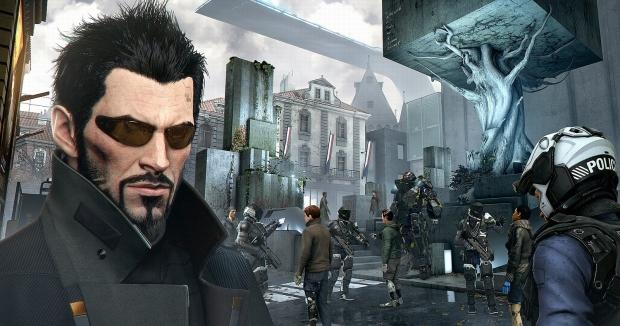Deus Ex: Mankind Divided is set to become one of the biggest games of 2016, and during this year's Game Developers Conference, some details were revealed on the graphics engine powering it; the Dawn Engine.
It was revealed that Mankind Divided will be using a heavily modified version of IO Interactive's Glacier 2 engine, with global illumination that will use hundreds of thousands of lighting probes, and much more. Here's what to expect from Deus Ex: Mankind Divided:
- Eidos Montreal has a Labs department that focuses on research and development of technology for multiple Square Enix studios and games.
- The Dawn Engine is a heavily modified version of IO Interactive's Glacier 2 engine.
- The following middlewares are being used for Deus Ex: Manking Divided:
- Umbra
- PhysX
- APEX
- Bink
- Scaleform
- FMOD
- Nav Power
- Deus Ex: Manking Divided uses Tiled Lighting, with Deferred randing for opaque surfaces and forwad lighting for transparent surfaces.
- The team developed an anti-aliasing solution using a temporal algorithm. It fixes a lot of the specular flickering and smooths out the small details in objects.
- A temporal solution was also used for ambient occlusion. The ambient occlusion is computed at half resolution and then upsampled over multiple frames.
- For reflective surfaces the team used screen space reflections with a fallback on localized cubemaps.
- Global illumination for indirect lighting used spherical harmonix baked offline. Opaque surfaces use per pixel lighting, and the probes are placed with variable density over multiple levels.
- The technology for hair has been developed by the studio's Labs department, and it's an improved version of AMD's TressFX.
- The game will include both indoor and outdoor locations. The maps are pretty big, but not as big as in open world games. Yet, they're very dense. The biggest level is one square kilometer in size, and includes 300 million polygons.
- There are a lot of dynamic objects, and between 10,000 and 80,000 objects at any given time. Not all of them are rendered at the same time, only the visible ones.
- Global illumination, which is baked offline, uses hundreds of thousands of lighting probes.



